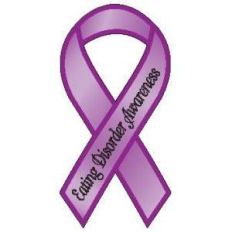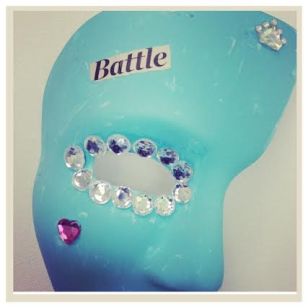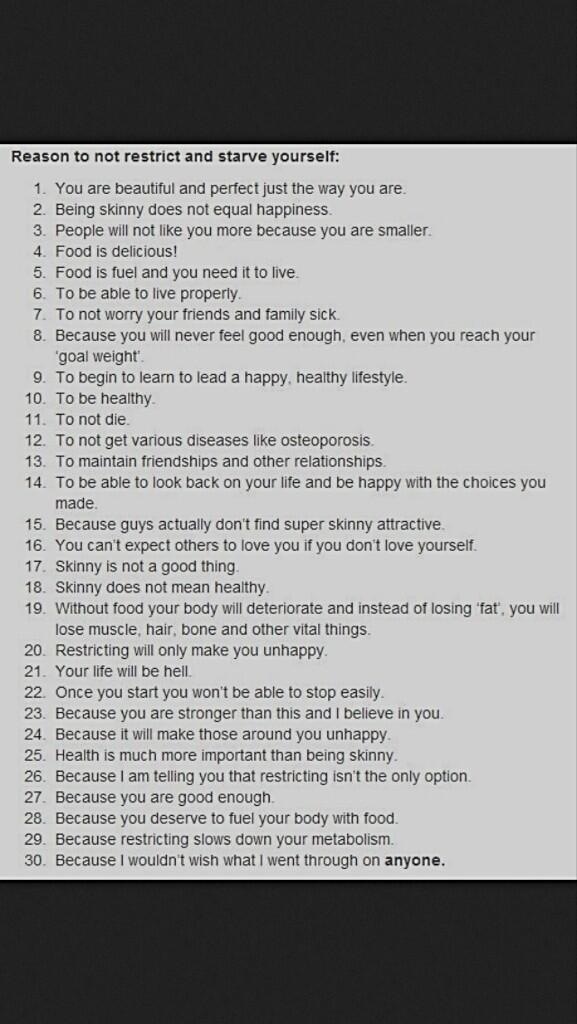For so many people the ability to stand up for their inner needs and wants can be very difficult. Often times many people I encounter hold many of their emotions and thoughts within themselves. I know especially for the eating disorder population so much of what feeds into their negative view of themselves is driven by an inability to feel they should be seen, heard or have a voice. I work very hard with my clients to not only empower them, but to help them find their inner strength to define their emotions, define their thoughts, define their needs, assert themselves and set boundaries in their worlds. This concept of standing up for ones self is a very hard concept for many people but for the eating diorder community it is especially tough. An eating disorder is a selfish disorder, its a mean disorder, its a bullying disorder. It makes a person feel unworthy, unlovable, and most of all unimportant. This post is for anyone who ever felt unseen, unheard, unloved, for the tears cried at night, for the silent taunting screams that haunt so many. To anyone who ever felt neglected, unappreciated, judged.

So many peoples lives are spent and driven by the constant worry about what others think, worried about how others see and view them and I ask why? I encounter this pattern with so many of the eating disorder clients I work with, they have such a need and a desire to give all of themselves to loved ones, to worry about how others see them, never feeling good enough, never feeling like they matter. Often times this preoccupation with what others think and how they see us instill a silence within a person. This silence is a dangerous cage, when someone takes their emotions, thoughts and locks them away it’s only a matter of time before all those pent up emotions and thoughts want to break free. I have noticed that for a lot of people who suffer from an eating disorder they have either been surrounded with too rigid of boundaries which leads to suppressed emotions or not enough of a boundary which leads to a sense of not knowing ones own identity. The inability to handle or process emotions from lack of boundaries for someone struggling with an eating disorder can be acted out in many ways.

Someone struggling with anorexia restricts their food because I often hear it is the one thing that they can control but it is also a way to numb emotions and thoughts. As someone starves themselves and the physical implications start to take affect, the internal implications are unwinding as well. Their is an inability to process or define their emotions and if emotions come up the anorexia serves as a numbing agent. When you are physically depleted, your brain is depleted as well. There is a disconnection between mind and body and often times someone suffereing from anorexia is so malnoursihed or week it serves as a way to disconnect from the world and emotions. This is why in treatment centers when someone is being renourished its an overhwmelming experience. They start to feel again and so many of the negative emotions and thoughts will begin to resurface.
Someone struggling with bulimia its a physical action based behavior. Someone who binges and purges or just purges whatever they ate is coping with emotions and thoughts through a physical act. The pain they feel is often times acted out through purging. It’s a physical release of what has been kept inside of them. Its a physical representation of trying to purge ones emotions. I hear many comments from so many who suffer from bulimia that its a coping tool for them to release their pain, sometimes its a violent act against themselves, its an aggresive expression of the pain unfolding within them. Within the brain itself the brain associates the cycle of bulimia as a coping pattern so in treatment it is almost like detoxing someone off a drug. The withdrawls from the act of purging leave someone who suffers from bulimia feeling helpless and overwhelmed, when their feelings come up the coping tool they have used for so long is no longer their to serve its purpose and that can be very difficult for someone recovering from bulimia.
Someone struggling with binge eating it’s a way to disconnect from emotions and self. Its an uncontrolable force that takes over its a disociation where a person is not present in the moment until after the binge where guilt and shame then take over. The guilt and shame ruminate and taunt the person which leads to a lower sense of control, worth or value. These negative emotions then fuel the cycle of numbing out and mindlessly eating all over again to further serve a numbing purpose. In treatment for someone who uses food during emotional times this can be a very hard adjustment.
I bring up these three behaviors and components because they all have things in common, they serve a purpose to help someone distract, disconnect and dissociate from emotions that prove to much to bare or handle. I truly believe if someone can develop a way to assert their needs and boundaries and become and advocate for themselves because they believe they are worth standing up for, it would help them define, process and learn how to handle hardships, needs and emotions. Boundary setting is a crucial skill for people to learn. We must empower our clients to envision and create an invisible line.

Here is an example list of some unhealthy boundaries:
• Sacrifice their personal values, plans or goals to please others
• Allow others to define who they are and make decisions for them
• Expect others to fulfill all their needs
• Feel guilty when they say no
• Hesitate to share their opinions or assert themselves if they are being treated unfairly
• Frequently feel used, threatened, victimized or mistreated by others
• Afraid of confrontation or conflict
• Take responsibility for other people’s feelings
• Tell others how to think, feel or act
I really work hard to empower my clients to feel comfortable with their voice and their instincts.
Here are some good ways to start defining your needs and emotions:
1. Create a personal bill of rights to slowly feel comfortable identifying needs and asserting them.
2. Become aware and identify your emotions, thoughts and feelings within your body. This process is about slowly reconnecting with yourself.
3. Set limits for yourself based on your needs and emotions
4. Acceptance- Come to a place of acceptance. Assert your need that you are of value and your thoughts and opinions matter.
For many people when someone starts to assert themselves it can at first be a shock to not only the people in their lives but to themselves. My message to everyone out there who may be struggling with so many emotions that they have pushed down or kept hidden, is to slowly trust in your inner voice, to slowly fight for yourself. There is a purpose to your pain and maybe one purpose is to give you a power you have had all along.

















